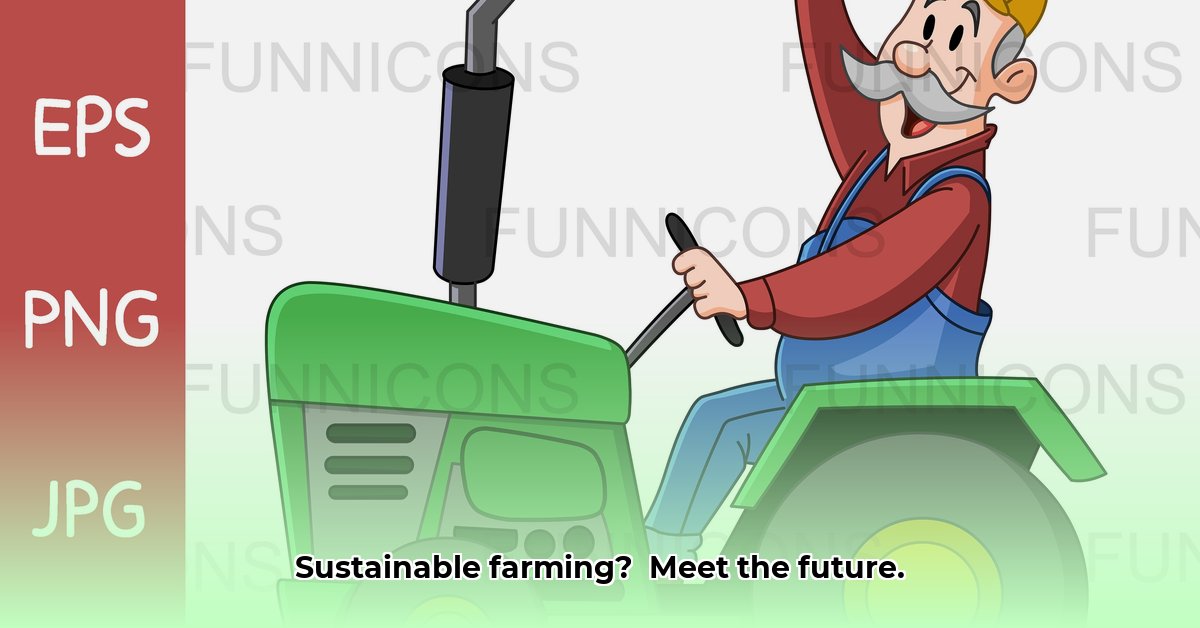
Have you ever gazed at a cartoon depicting a futuristic, sleek, green tractor? This isn't just whimsical imagery; it symbolizes the exciting shift towards sustainable agriculture—farming methods that are both productive and environmentally responsible. See more examples of green tractor cartoons for inspiration. This article explores how innovation in farm machinery is creating a greener future, using that cartoon tractor as a springboard for understanding the vital need for sustainable farming practices.
The Current State of Agricultural Machinery: A Powerful but Problematic Past
Tractors are indispensable to modern agriculture, powering everything from small family farms to vast industrial operations. However, traditional farm machinery often relies heavily on fossil fuels, contributing significantly to greenhouse gas emissions and soil compaction. While improvements in fuel efficiency have been made, many existing tractors still fall short of optimal environmental standards. This poses significant challenges for both farmers and the environment, impacting soil health, water quality, and the overall carbon footprint of food production. What needs to change?
The Urgent Need for Sustainable Farming: Protecting Our Planet, Securing Our Future
Unsustainable farming practices carry a heavy price. Fossil fuel dependence contributes to climate change, while excessive pesticide and fertilizer use degrades soil and pollutes waterways. Soil compaction reduces long-term productivity. These unsustainable practices not only raise production costs for farmers but also threaten global food security and ecological health. Can we continue down this path? The answer, clearly, is no.
Sustainable Solutions: Innovations Driving a Greener Revolution
The good news is that innovative solutions are emerging to address these challenges. The transition towards sustainable agriculture involves several key advancements:
Alternative Fuels: Traditional diesel fuel is slowly giving way to cleaner alternatives like biofuels (fuels derived from plant sources), electricity, and hydrogen. While challenges remain in terms of cost and infrastructure, the potential for significantly reduced greenhouse gas emissions is considerable.
Precision Farming: This revolutionary approach harnesses technology like GPS, sensors, and data analytics to optimize resource allocation. Farmers can precisely apply water, fertilizers, and pesticides, minimizing waste, reducing costs, and promoting environmental stewardship.
Automation: Autonomous tractors and other robotic farm machinery are rapidly advancing. These self-navigating machines boost efficiency, reduce labor costs, and minimize soil compaction, leading to greater productivity and environmental protection.
How We All Contribute: A Collaborative Effort for a Sustainable Future
The transition to sustainable agriculture requires a collaborative effort from all stakeholders. Here's how different groups can contribute:
| Stakeholder | Key Actions |
|---|---|
| Equipment Manufacturers | Invest in R&D for alternative fuels and autonomous machinery; improve efficiency. |
| Farmers | Adopt precision farming techniques; explore government subsidies and incentives. |
| Governments | Implement supportive policies, incentives, and investment in sustainable technologies. |
| Consumers | Support sustainable farming practices through informed purchasing choices. |
| Research Institutions | Continue research on alternative fuels and improved sustainable farming practices. |
The Power of the Farmer Tractor Cartoon: A Symbol of Hope and Innovation
That initial cartoon image—the futuristic, green tractor—is more than just a whimsical illustration. It embodies the promise of a sustainable agricultural future. It highlights the potential for innovative technology to revolutionize farming and minimize its environmental impact. By showcasing these advancements in an accessible and engaging way, these cartoons foster dialogue, inspire action, and ultimately contribute to a more sustainable world.
Key Takeaways:
- Modern farm technology offers significant opportunities to reduce the environmental footprint of agriculture.
- Precision farming and alternative fuels play pivotal roles in creating a more sustainable future.
- Collaboration among farmers, manufacturers, governments, and researchers is essential for successful implementation.
The future of farming is not simply about producing food; it's about producing food responsibly. By embracing sustainable practices, we can ensure a healthy planet and a secure food supply for generations to come. Let the cartoon tractor serve as a reminder that a greener, more efficient future for agriculture is within reach.